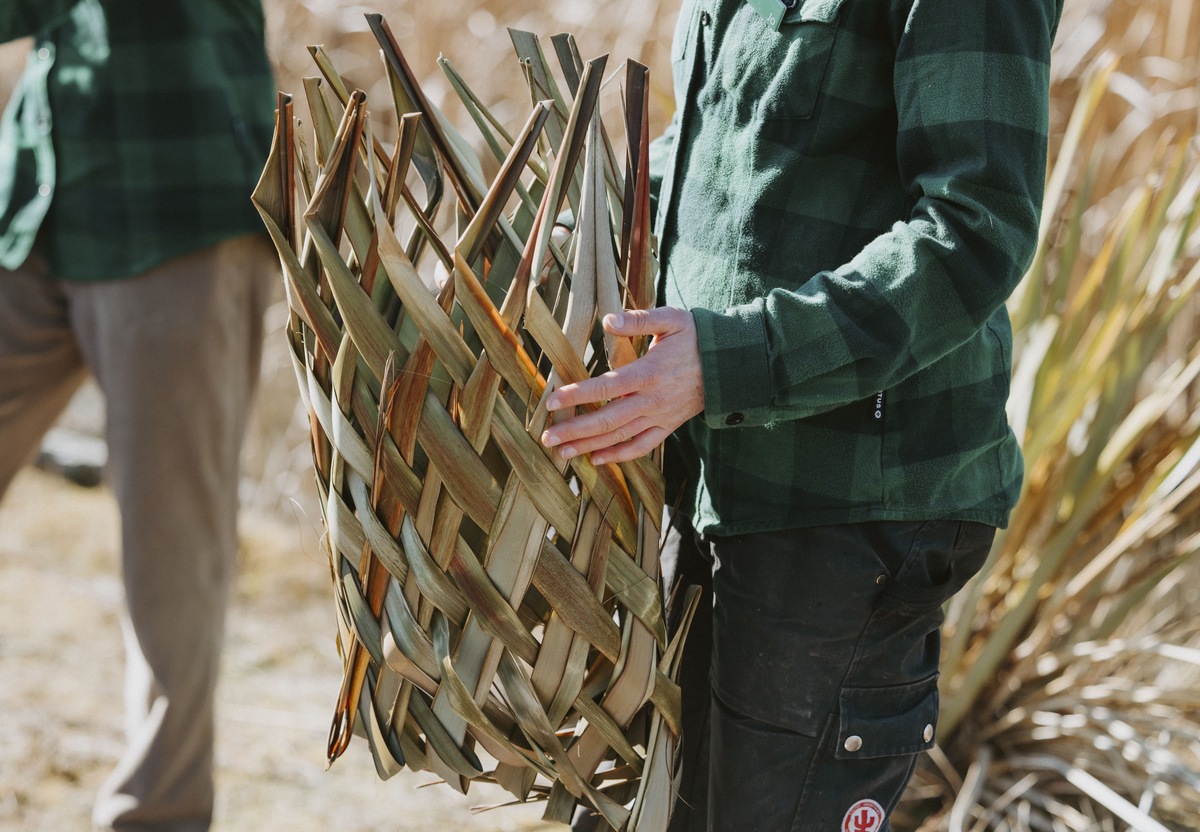Warbirds over Wānaka and Te Kākano team up

22 October 2024, 4:07 PM
 Native harakeke plant guards do away with the need to use plastic guards.
Native harakeke plant guards do away with the need to use plastic guards.The Warbirds Over Wānaka Community Trust has teamed up with native plant nursery Te Kākano to help launch an innovative project which the two organisations hope will be adopted by other groups around the country.
The project, called Interwoven, involves using native harakeke (flax), to make guards to be used to protect newly planted natives from rabbits and the elements, doing away with the need to use plastic guards.
Interwoven was piloted earlier this year with local schools and Polytech students who were taught to weave harakeke guards.
The guards have since been successfully installed at two planting sites in Wānaka.
Thanks to a $20,000 donation from the Warbirds Over Wānaka Community Trust this initiative can now be fully launched, Te Kākano Trust manager Loran Verpillot said.
Airshow general manager Ed Taylor said the airshow is always looking at ways to reduce its carbon footprint.
Visitors to the 2024 Wānaka airshow had the opportunity to contribute to the Warbirds Trust’s carbon offset programme with the funds raised matched by the airshow.
“We have a number of initiatives already in place in terms of how we can improve our environmental sustainability and being part of the Interwoven project is another great way to help us achieve that,” Ed said.
“There are the obvious practical benefits of the harakeke guards replacing plastic, but it’s also about education and community engagement which makes this partnership with Te Kākano so worthwhile from a Warbirds’ point of view.”
Loran said she hopes the project’s impact will extend beyond individual planting sites to inspire similar initiatives in other parts of the country.
“By weaving together threads of tikanga Māori, innovation, and sustainability, the ‘Interwoven’ project not only protects native flora but also offers a great opportunity for the community to connect with nature,” she said.
“Collaborative workshops and educational programmes will teach basic weaving techniques and also foster a deeper connection to local ecosystems and cultural heritage.”
PHOTO: Te Kākano




